Posted: 10/19/15
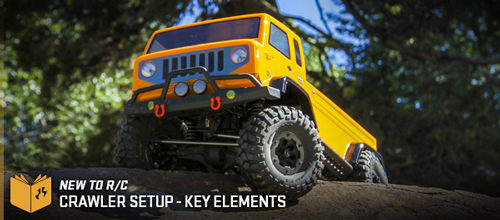
Whether your idea of competition is attending a national championship or one-upping your friend at the local park, getting your rock crawler dialed in for top performance is an obvious plus. Out of the box, your Axial vehicle is setup for high performance, but so is everyone else’s. You need an edge. The following tips cover the key elements that you should address when you want to have the best setup crawler possible. Every aspect of tuning is not covered. These are the key elements. Also, as you learn about setting up a rock crawler you'll quickly see that almost everything is a compromise; what works for one type of competition and/or terrain doesn't necessarily work for another.

Tires
Tires profoundly influence performance—maybe more than anything else. While there is no single best tire, you want to make sure you have the best tire for the conditions you’re running on. Also, not all rocks are the same, so there isn’t one best tire for all rocks. For competition, the softer the compound is better. The compromise here is wear and the need to get the tire’s foam insert right for the weight of the vehicle. Axial's softer and stickier compound is called R35 (white dot).
While outfitting your rig with new tires will cost you, it is money well spent. You can learn more about picking the right tire here.

Center of Gravity
Specifically where your center of gravity (CG) is located isn’t important—meaning you don’t need to calculate its exact position. What is of key importance is that the CG is low—as low as you can possibly get it. A lower CG is always better. On a rock crawler, an optimized CG will help on climbs, descents and side hills.
There are a number of ways to lower your CG. First, identify your heavy components and try to identify ways to mount them lower. Sometimes lowering a component isn’t possible, but lighter options are available. An excellent example is your battery. If you’re using a NiMH battery, a LiPo will make a profound difference. If you’re already using a LiPo, consider a smaller pack. It’s understandable that if you’re trail riding you want maximum runtime. Just know that the compromise of a big battery with a lot of capacity is a higher CG. Instead of one large battery, consider two packs wired in parallel with one mounted on each side of the chassis. Another way to lower the center of gravity is to add weight to your vehicle down low such is in the wheels or on the axles. The problem with making your vehicle heavier is that it can rob power and decrease durability.
A great way to lower the CG is to the body as much as possible. You will need to open up the wheel wells with body scissors, but doing this will make a big difference in handling.

Maneuverability
If you're running a course with gates and judges tracking the use of reverse and each touch of a gate marker or out-of-bounds line, maneuverability is of huge importance. If available, high clearance knuckles combined with universal axles provide maximized steering throw. If you're running a G6 or similar event, this can move down your list of importance.
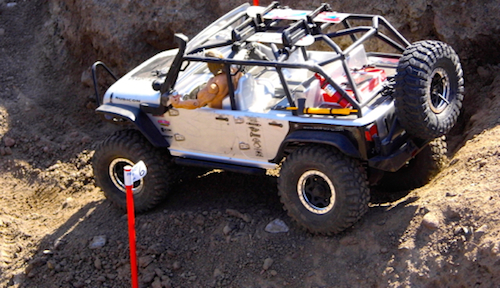
Weight Distribution
Weight distribution, or weight bias, is a close cousin of CG. Your crawler will perform better on climbs if more weight is located over the front axle than the rear. This is why it is better to have the battery mounted up front. While this makes for a tighter squeeze and is a little harder to access with the body on, the end result is improved weight bias.
The difference between a front weight bias and a low CG is that with a front weight bias, you can have too much of a good thing. A 60/40 split is probably ideal. Like CG, however, it is best to start by moving components as opposed to adding weight.
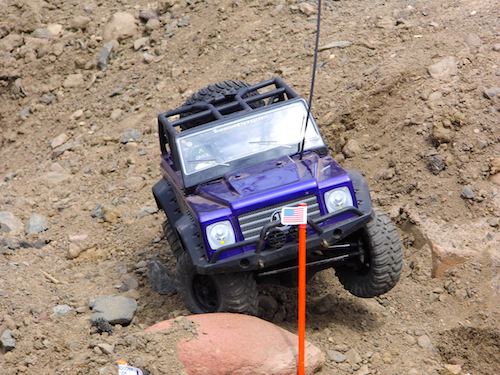
Durability
There are drivers who can compete in competition after competition and never break a single part and then there are drivers who need every single heavy duty aluminum hop-up offered. Axial has numerous upgrade parts that improve durability, but you don’t need to buy them all at once. For crawlers it’s best to start at the front (aluminum servo horn, aluminum steering knuckles, aluminum steering links) and work your way back (heavy-duty gears, aluminum rear axle lockouts). The only exception to the front to back rule of thumb is driveshafts.
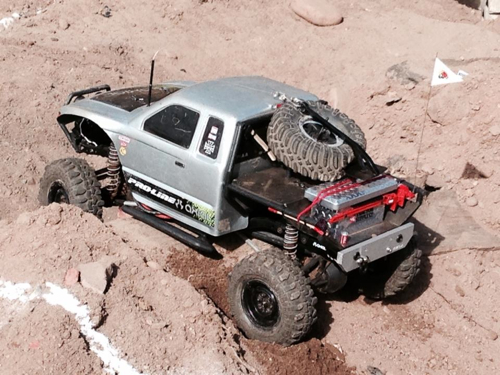
Ground Clearance
Increased ground clearance allows a vehicle to travel over obstacles without struggling or possibly getting stuck. The axles are the lowest components on the vehicle and the most likely to come in contact with obstacles. Without major modifications, the only way to raise axle clearance is to use taller tires.
Center skid plate clearance is increased when taller tires are installed and when the suspension height is increased. The latter, however, adversely impacts the CG so proceed with caution.
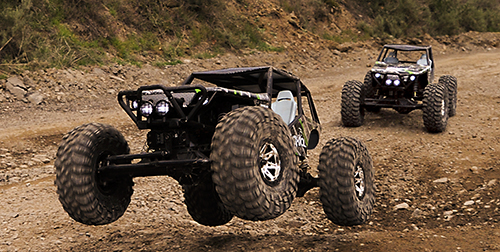
Speed
Rock crawling has changed. It wasn’t that long ago that rock crawling was literally crawling. Now, competitions are entirely different and you may need some speed, but it depends on the type of competition. The key here is to know what you’re getting into. A G6 competition is going to require you and your vehicle to cover some significant ground in the shortest amount of time possible. A 55-turn motor might be good for climbing, but too slow for the long spaces between checkpoints. If you’re running a G6, consider setting up vehicle so that it’s faster than a brisk walk. In other words, it should be closer to 10 mph than 5 mph. Over 10 mph and you might be giving up more crawling performance than you should, but it really all depends on the terrain. If you’re running brushless, a high voltage, low Kv setup provides the best of both worlds.
If you’re running on a super technical course with extremely challenging obstacles, a slow and torque-based setup might be ideal. Even then, however, having some wheel speed at your disposal can come in handy on many obstacles.

Articulation
If you are expecting tips and tricks on getting more articulation out of your Axial Racing vehicle, you’re mistaken. The only thing massive suspension twisting articulation is good for is flexed out photos. In the real world, it will hurt far more than it ever helps you. In stock form, your Axial Racing vehicle has all the articulation it needs. More will just allow it to get twisted up like a pretzel.
This article explains why articulation is often misunderstood and overrated.
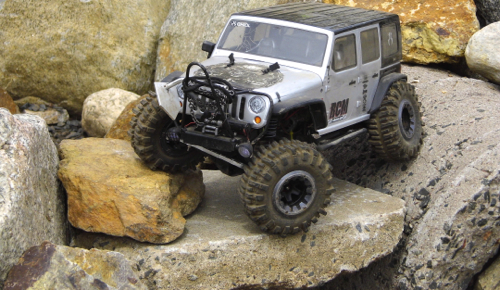
Suspension Stiffness
Rock crawlers generally work best with slightly stiffer rear springs than front springs and you want to avoid an overly soft suspension that easily collapses when side hilling. Most people don’t consider how increasing the weight of the vehicle with hop-ups and accessories might increase the overall weight and thus require stiffer springs. Stiffer suspension also resist torque twist far better than soft, mushy suspensions.